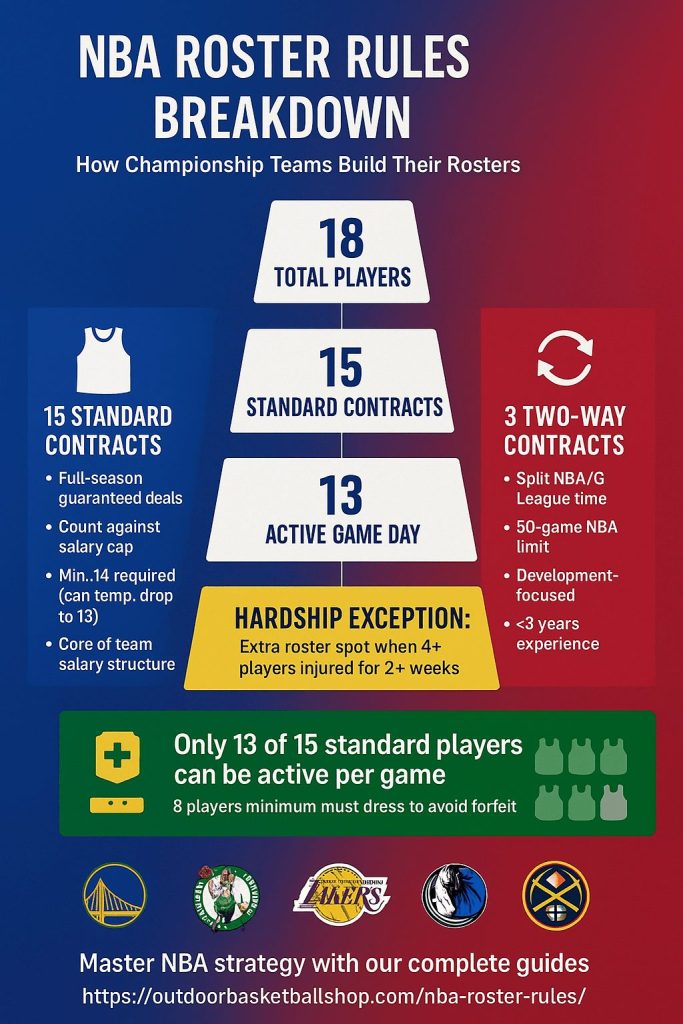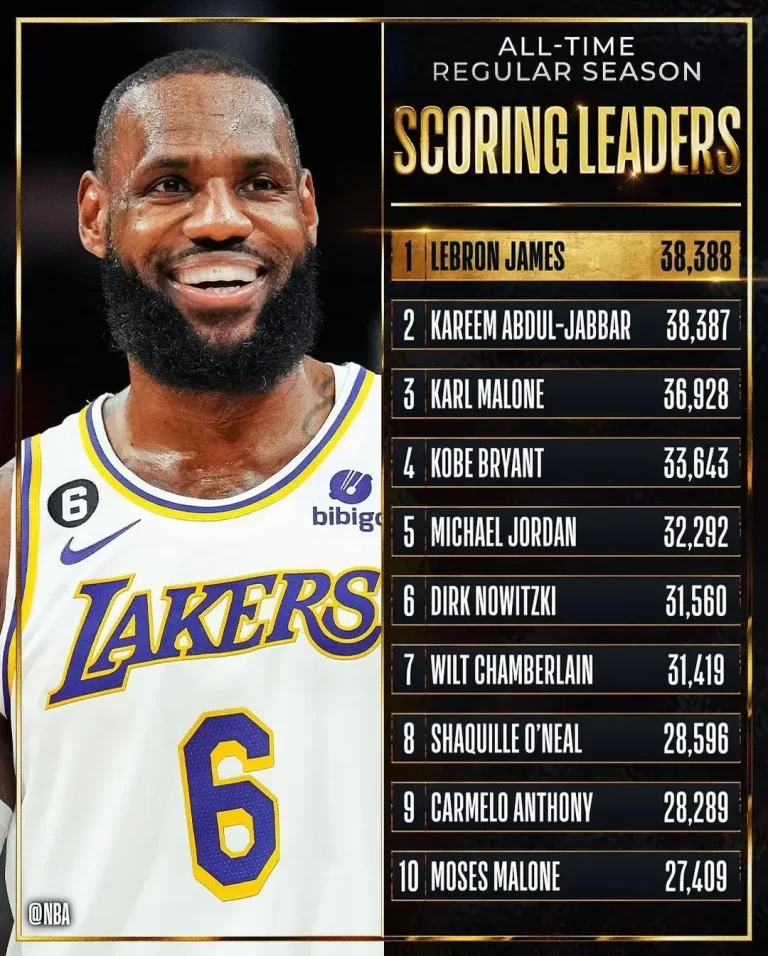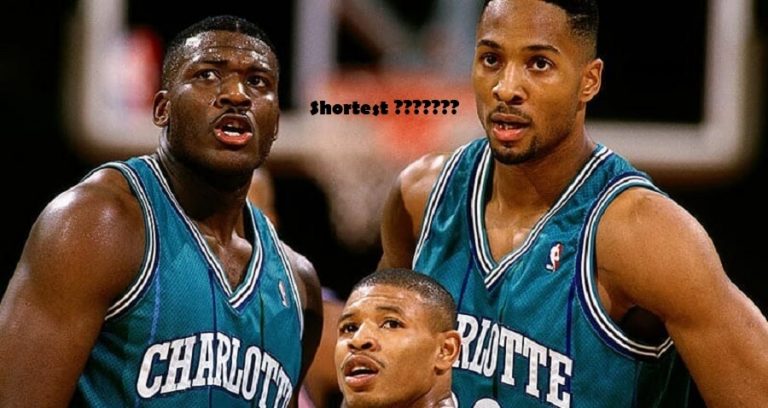NBA Roster Rules: The Blueprint for Building a Championship Team
Think an NBA roster is just about signing the best 15 players? Think again. The NBA roster rules are a complex strategic framework that dictates how front offices for the Golden State Warriors, Boston Celtics, and every other team construct their squad. Mastering the nuances of the 15-man roster, two-way contracts, and the salary cap isn’t just front-office business—it’s the key to understanding why your team makes the moves it does.
So, How Many Players Are Actually on an NBA Team?
The straightforward answer is 18. But the real story is in the breakdown:
- 15 players on standard, full-season contracts.
- 3 players on flexible “two-way” contracts, splitting time between the NBA and the G League.
This structure isn’t arbitrary. It’s designed to balance competitive play, financial control, and player development. On any given game night, this pool of 18 is whittled down to 13 active players who can actually suit up and play.
NBA Regular Season Roster Rules Explained
During the league year, the rules are very specific about how many players a team can carry. This structure is designed to maintain competitive balance and manage costs.
The 15-Man Standard Roster
The core of any NBA team is its 15 players on standard contracts. These are the fully-salaried athletes you see night in and night out. Teams must carry a minimum of 14 players on standard deals, though they can temporarily drop to 13 for short periods. This ensures there’s enough talent to be competitive. The financial commitment to these players counts against the team’s salary cap, a crucial factor for front offices.
The 3 Two-Way Contract Spots
Introduced in 2017, two-way contracts essentially expanded each team’s roster from 15 to 18 players. These spots are for developing talent and provide incredible flexibility:
- Who qualifies: Players with three or fewer years of NBA service.
- How it works: These players split their time between the NBA team and its G League affiliate.
- Game Limit: They can be active for up to 50 of their NBA team’s 82 regular-season games.
- Purpose: It’s a development tool that gives teams a closer look at prospects while providing players a higher salary than a standard G League deal.
A prominent example from the 2024-25 season was Tristan Vukcevic, a center on a two-way contract with the Washington Wizards. Vukcevic showcased his potential as a stretch big man, averaging 9.4 points and 3.7 rebounds in 35 appearances, including a standout 28-point, 11-rebound game to finish the season.
In-Game Rules: Active Roster vs. Full Roster
This is a common point of confusion. While a team may have 18 players under contract, not all of them can play in a single game.
- Active List: For each game, teams must designate between 12 and 13 players as “active.” These are the only players eligible to suit up and play.
- Inactive List: The remaining players on the standard roster (and two-way players not counting toward the 50-game limit) are listed as inactive.
- Emergency Minimum: A team must have at least eight players dressed and available to avoid a forfeit.
Offseason & Training Camp Roster Limits
The rules are more flexible outside the regular season. From the summer through the end of the preseason, teams can carry up to 21 players. This allows franchises like the Detroit Pistons or Houston Rockets to evaluate young talent, undrafted rookies, and veteran free agents in training camp before finalizing their 15-man standard roster for the opening night.
Beyond the Basics: Other Key Roster Mechanisms
NBA roster rules include several other mechanisms that provide teams with crucial flexibility throughout the grueling 82-game season.
10-Day Contracts
These short-term contracts are a lifeline for both teams and players. They are often used to:
- Fill a temporary need due to injuries.
- Get a look at a free agent without a long-term commitment.
- Teams can sign a player to two consecutive 10-day contracts before having to sign them for the rest of the season.
Hardship Exception
When a team is decimated by injuries, the league can grant a hardship exception. This allows a team to temporarily exceed the 15-man roster limit.
A perfect example occurred in the 2024-25 season with the Indiana Pacers. After multiple injuries, including to star Tyrese Haliburton, the Pacers qualified for the exception (triggered when four players miss three consecutive games and are expected to be out two more weeks). They used it to sign forward Cody Martin to a 10-day contract, providing much-needed temporary depth. This rule prevents teams from being unfairly penalized for a rash of injuries.

NBA Roster Rules FAQ
What is the minimum NBA roster size?
Teams must have at least 14 players on standard contracts, though they can temporarily drop to 13.
How many players dress for an NBA game?
Between 12 and 13 players can be active and dress for a game, with a league-enforced minimum of eight.
What is the difference between active and inactive roster?
The active list consists of players eligible to play in that specific game. The inactive list comprises players on the standard roster who are not eligible for that particular contest.
Is the NBA roster size the same as the All-Star roster?
No, this is a common confusion. NBA team rosters are for the 30 clubs like the Cleveland Cavaliers and Dallas Mavericks and have 15 standard players. The All-Star Game rosters are much smaller, with only 12 players selected from across the entire league to represent each conference. You can learn more about the selection of the league’s best in our article on the highest NBA scoring players.
Why are there only 15 spots on an NBA roster?
The limit is a function of the CBA, balancing competitive balance with financial control. It forces teams to make strategic decisions about allocating their salary cap and playing time, ensuring a concentration of talent and preventing overly deep benches. This history of shaping team composition is as fascinating as the journey of the tallest player in NBA history.
Conclusion: The Strategy Behind the Numbers
NBA roster rules are the framework within which champions are built. Understanding the 15-man standard roster, the three two-way slots, the active list, and tools like the hardship exception is crucial for any fan. It reveals the strategic genius behind how a front office forges a team capable of competing, whether it’s a veteran-laden squad like the Denver Nuggets or a rebuilding project like the Charlotte Hornets. These rules ensure the league remains competitive, financially viable, and focused on developing the next generation of stars, some of whom may one day be counted among the best dunkers in NBA history.

Hello!
I’ve been playing and coaching basketball for over 15 years, and testing gear has always been part of my passion for the game. Over the years I’ve personally assembled and used more than 50 different basketball hoops — from budget portables you can roll onto a driveway to heavy in-ground systems that feel like what you see in gyms.
When I review a hoop, I don’t just copy specs from the box. I set it up, play on it in different conditions, and pay attention to how it holds up — whether it’s rim stability, rebound quality, or how the base handles wind and weather. I also keep up with the latest product releases and feedback from other players so my guides reflect what actually works, not just marketing claims.
My goal here at Outdoor Basketball Shop is simple: to share hands-on, unbiased insights so you can choose the right hoop for your space, your budget, and your style of play. Every recommendation is based on real testing and experience, and I always disclose when links may earn a commission, at no extra cost to you.
. Learn more about me on my about page.







